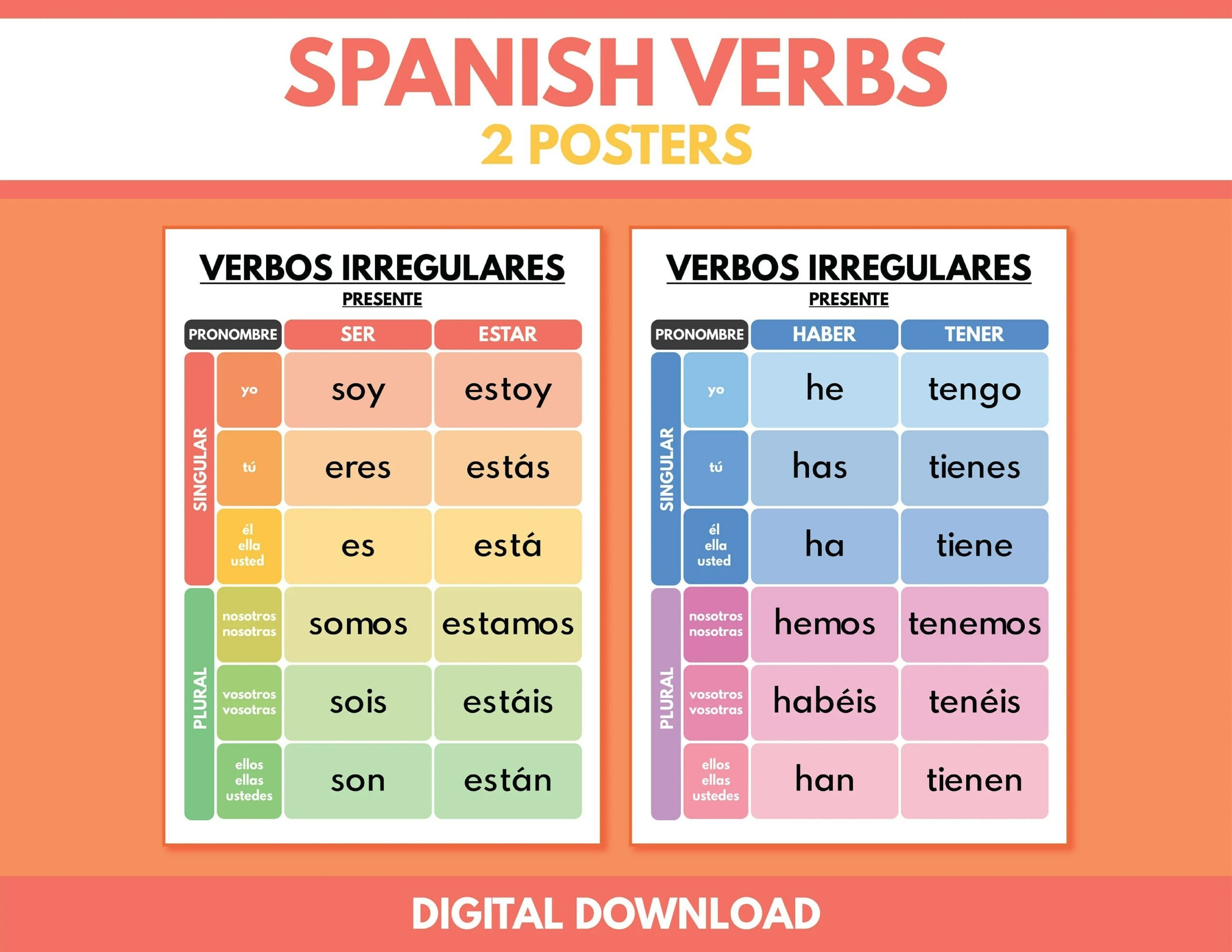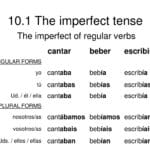Unlock Spanish fluency: Master the conjugations of ser and estar to express “to be” accurately and confidently in any tense. This comprehensive guide demystifies these essential verbs, providing clear explanations and examples for all conjugations, eliminating confusion. From beginner to expert, learn the present, preterite, imperfect, and more with our easy-to-understand tables and real-world scenarios. Go beyond simple conjugations and explore the nuanced uses of ser and estar, enhancing your overall understanding of Spanish grammar and expression.
Understanding the Core Difference Between Ser and Estar
Both ser and estar translate to “to be” in English, creating a common challenge for Spanish learners. The key is to remember that ser describes permanent or inherent qualities while estar captures temporary states or conditions. Imagine ser as defining the essence of something and estar as capturing a snapshot of it in a specific moment.
Ser: Defining the Essence
ser paints the permanent picture, revealing the core identity of a person, place, or thing. Consider these examples:
Identity and Origin: Soy María. (I am Maria.) Soy de España. (I am from Spain.) These describe fundamental aspects of Maria’s being.
Time: While time is constantly flowing, ser pinpoints specific moments. Son las tres. (It is three o’clock.)
Profession: Es médico. (He is a doctor.) This describes an established profession, a defining characteristic.
Essential Characteristics: El coche es rojo. (The car is red.) This describes an inherent quality of the car.
Estar: Capturing the Moment
estar captures the present moment, highlighting temporary states, locations, and conditions. Let’s illustrate this with some practical situations:
Location: Estoy en casa. (I am at home.) This specifies your current location, subject to change.
Feelings: Estoy feliz. (I am happy.) Feelings are often transient, hence the use of estar.
Temporary Conditions: La puerta está abierta. (The door is open.) This condition can easily change.
Actions in Progress: Estoy comiendo. (I am eating.) This describes a temporary activity.
Conjugation Charts: Your Quick Reference
Here’s a handy table summarizing the conjugations of ser and estar across various tenses:
| Tense | Ser | Estar |
|---|---|---|
| Present | soy, eres, es, somos, sois, son | estoy, estás, está, estamos, estáis, están |
| Preterite | fui, fuiste, fue, fuimos, fuisteis, fueron | estuve, estuviste, estuvo, estuvimos, estuvisteis, estuvieron |
| Imperfect | era, eras, era, éramos, erais, eran | estaba, estabas, estaba, estábamos, estabais, estaban |
| Future | seré, serás, será, seremos, seréis, serán | estaré, estarás, estará, estaremos, estaréis, estarán |
| Conditional | sería, serías, sería, seríamos, seríais, serían | estaría, estarías, estaría, estaríamos, estaríais, estarían |
| Present Subjunctive | sea, seas, sea, seamos, seáis, sean | esté, estés, esté, estemos, estéis, estén |
| Imperfect Subjunctive | fuera, fueras, fuera, fuéramos, fuerais, fueran | estuviera, estuvieras, estuviera, estuviéramos, estuvierais, estuvieran |
If you’re looking for a comprehensive guide to the conjugation of Spanish verbs, look no further than our in-depth resources on the conjugation of secirse and subir.
Mastering the Nuances: Beyond the Basics
While the permanent/temporary distinction offers a solid foundation, there are nuances to explore. For example, personality traits, often seen as permanent, can be described with estar to emphasize temporary behavior. “Es una persona amable” (He is a kind person) describes a general trait, while “Está siendo grosero hoy” (He is being rude today) highlights a temporary departure from his usual character.
The “currently” test can be helpful. If adding “currently” before the verb sounds natural, estar is probably the better choice. “Está feliz” (He is currently happy) makes sense, while “Es actualmente feliz” (He is currently happy, implying permanently happy) sounds less natural.
Some experts believe that the ser/ estar distinction isn’t always clear-cut. Context and individual usage play a role. Ongoing research suggests that regional variations further influence the choice.
Common Mistakes to Avoid
Understanding the common pitfalls can accelerate your learning. Here are some typical errors to watch out for:
- Using ser for temporary states (e.g., Soy cansado instead of Estoy cansado).
- Using estar for permanent characteristics (e.g., Estoy médico instead of Soy médico).
Practice and Further Exploration
Practice is essential. Numerous online quizzes and exercises can help solidify your understanding. Immerse yourself in the language through music, movies, and conversations with native speakers. This will enhance your intuition for these nuanced verbs.
Remember, language is dynamic. Don’t be afraid of mistakes! They’re part of the journey. By embracing the complexities and continuing to explore, you’ll progressively refine your mastery of ser and estar.
- Senior at What Age: Benefits & Eligibility Guide - March 29, 2025
- Unlocking Senior Benefits: How Old is a Senior? Your Complete Guide - March 29, 2025
- Master Russian Politeness:A Guide to Saying Please - March 29, 2025

















2 thoughts on “Ser vs. Estar: Your Ultimate Guide to Conjugations and Usage (with Practice Quizzes)”
Comments are closed.